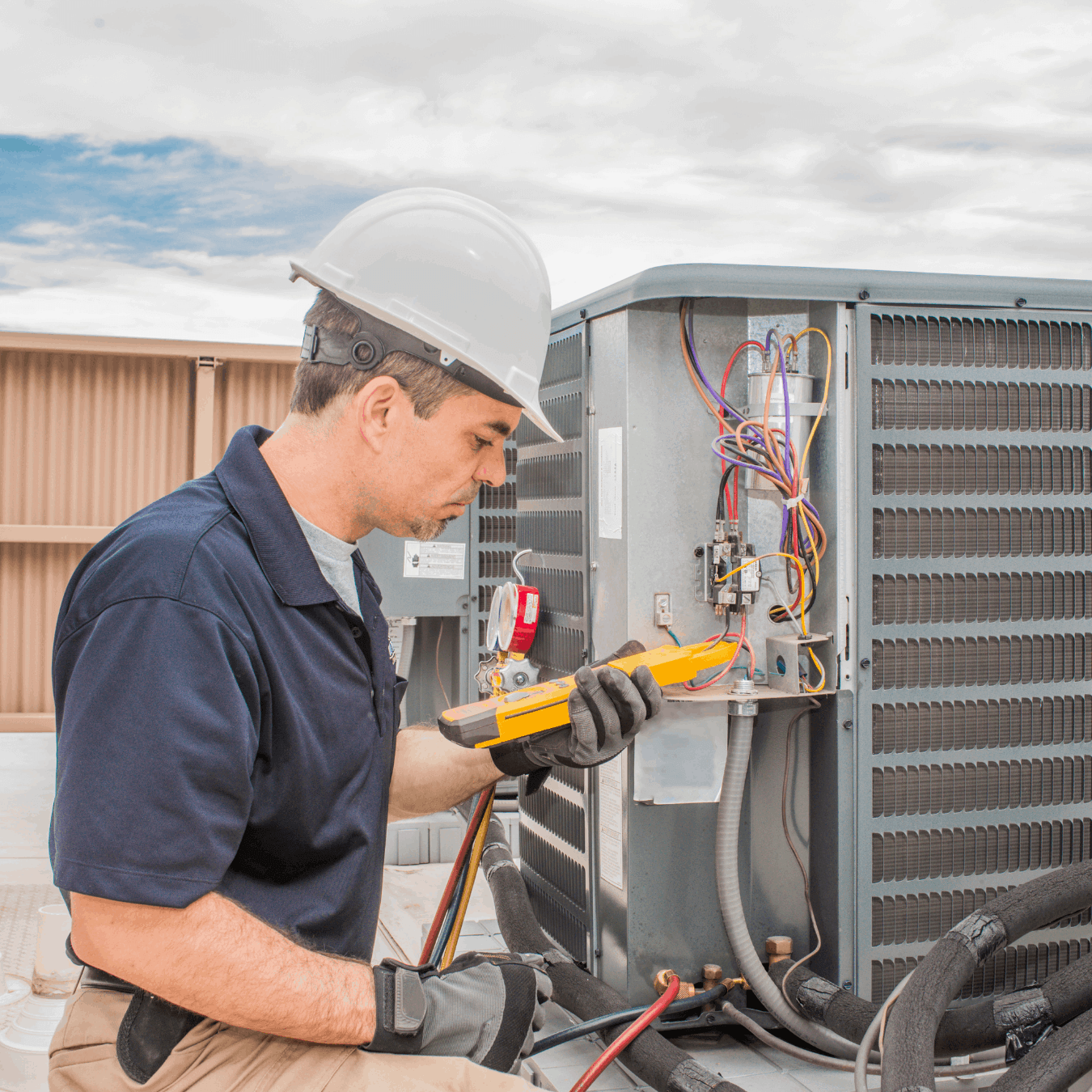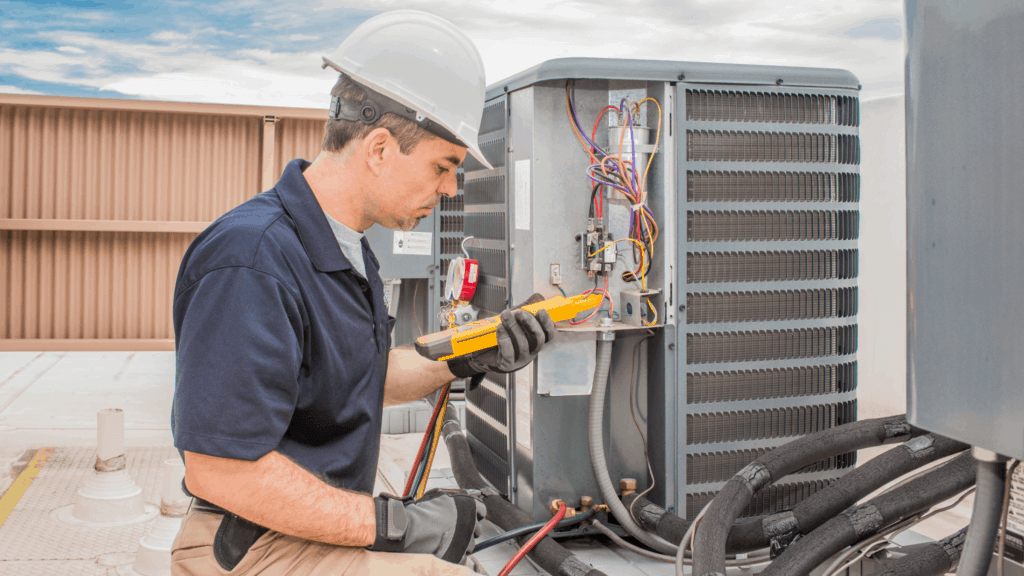

Even though it is a skilled trade profession, an HVAC technician still takes risks every day. The physically demanding job includes repairing dangerous machinery, installing heavy systems, and working in close quarters which can be delicate and hazardous. All can result in work accidents and injuries for even the most seasoned worker.
HVAC technicians encounter professional working hazards every day. After repeated exposure, workers can become desensitized to the dangers of their job. However, it’s important to stay aware of risks and take the necessary precautions to protect yourself and your crew while on the job.
An HVAC technician is at risk for a variety of injuries. These include:
Due to the physically challenging nature of the profession, HVAC technicians can sustain injuries for many reasons, including heavy lifting and working at odd angles. Heavy lifting can cause strains to the lower back, shoulders, and hands. Repeated stress injuries such as working at awkward angles can lead to upper body and neck injuries. Regular exercise inclusive of proper stretching and strength training may reduce the chance of these types of injuries.
Risks of injuries such as fractures, broken bones, torn ligaments, and concussions can occur from falls off ladders and roofs. It is not unusual for commercial HVAC systems to be installed on roofs, and many systems require a ladder to access, install or maintain. Sometimes even the work area for HVAC technicians can already be dangerous on its own, in tight spaces, or around a lot of debris where a slip and fall may occur. Furthermore, HVAC technicians sometimes work long shifts and tight schedules and experience increased work pressure which may leave one susceptible to mental and physical fatigue which can possibly lead to a higher likelihood of an injury occurring. When you are working overtime or hurrying to complete a job it is important to pause and ensure you are taking the proper and routine precautions to protect both yourself and others.
Risks of electrocution can be due to malfunctioning machinery or parts or wiring hazards. Electrocution can cause extensive burns, internal injuries, and even death. Severe lacerations to fingers and hands can result from working with metal, cutting, bending, fitting, and general work activities.
Another health risk for HVAC technicians is respiratory injuries. Technicians often work in confined areas. Dirty air filters can lead to bacteria, mold, and fungus inhalation, while faulty furnaces can result in carbon monoxide poisoning. Asbestos is another danger. Before the 1980s, the heat resistant material was commonly used for boilers and water and steam piping. Asbestos inhalation can cause severe lung and organ tissue damage and must be properly protected against with masks when working with old ductwork. HVAC technicians are also at risk to toxic substances, such as dangerous chemicals. Refrigerants, cleaning liquids and solvents, and gases can all cause serious burns, especially when exposed to heat. Brazing and welding can also quickly cause oxygen levels to deplete, leading to disorientation and further risk of injury. Make sure that areas have adequate ventilation and follow OSHA (Occupational Safety and Health Administration) guidelines by having someone else with you when working in a confined area.
It is central to your safety and good health to know the risks your job poses, and especially the measures you can take to keep you and your crew safe. In our work with HVAC technicians, we are aware of the following protocols and measures.
Lift safely by using dollies and carts and make sure to always wear personal protective equipment (PPE). For HVAC technicians, this includes:
Fully evaluate your worksite before beginning repair or installation. Record any information or details provided by the customer. Double-check that all systems are powered down and shut off, especially electrical equipment. All electricity should be cut off to the unit before beginning work, and make sure to inspect for any water leaks within the system. Take note of any dangers such as chemical hazards or slick surfaces, especially if it has rained recently.
Follow all safety procedures, such as removing gas cylinders from vehicles on hot days, servicing and replacing your equipment as needed, staying alert and hydrated, and having a coworker spot you when in confined areas. Remember to also follow safety protocols while on the road and traveling to jobs. Stay aware of your surroundings and schedule enough time between jobs so as not to rush.
Workplace injuries should not be taken lightly. Always stop and inspect the severity of any injury sustained while on the job. While protective gear can prevent injury or lessen the severity, gloves and boots can also conceal any harm sustained. If you have been harmed on the job, seek medical attention immediately. Some injuries, such as electrocutions or concussions, can cause hidden, internal damage. If you or a loved one has sustained a workplace injury as an HVAC technician, we will help you receive fair and just compensation for loss of earnings, damages, and medical expenses. Contact Dugan & Associates today online or by telephone at 412-353-3572 to speak with a knowledgeable Pennsylvania worker’s compensation lawyer to get the treatment and compensation you deserve.
"*" indicates required fields